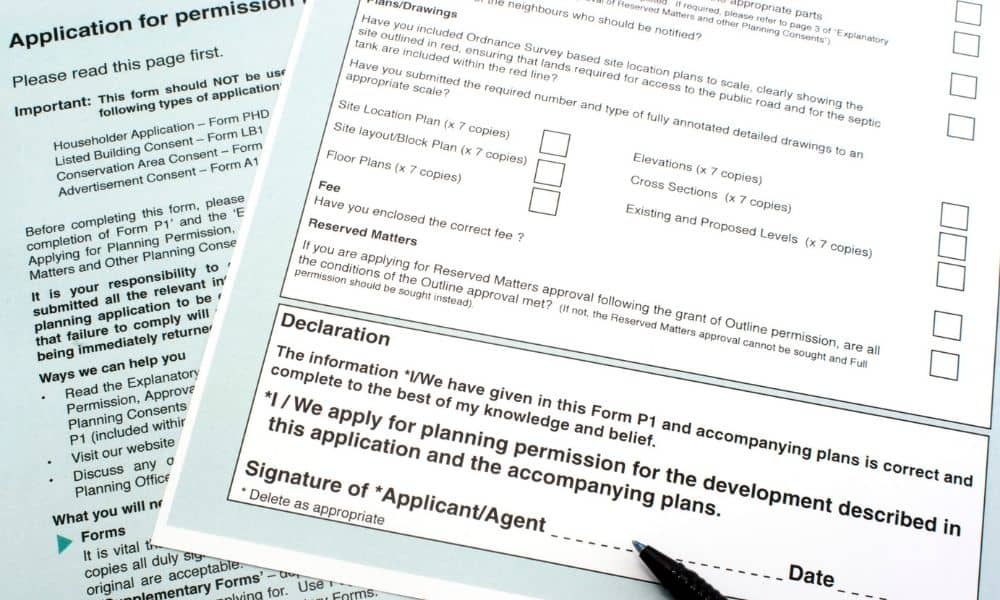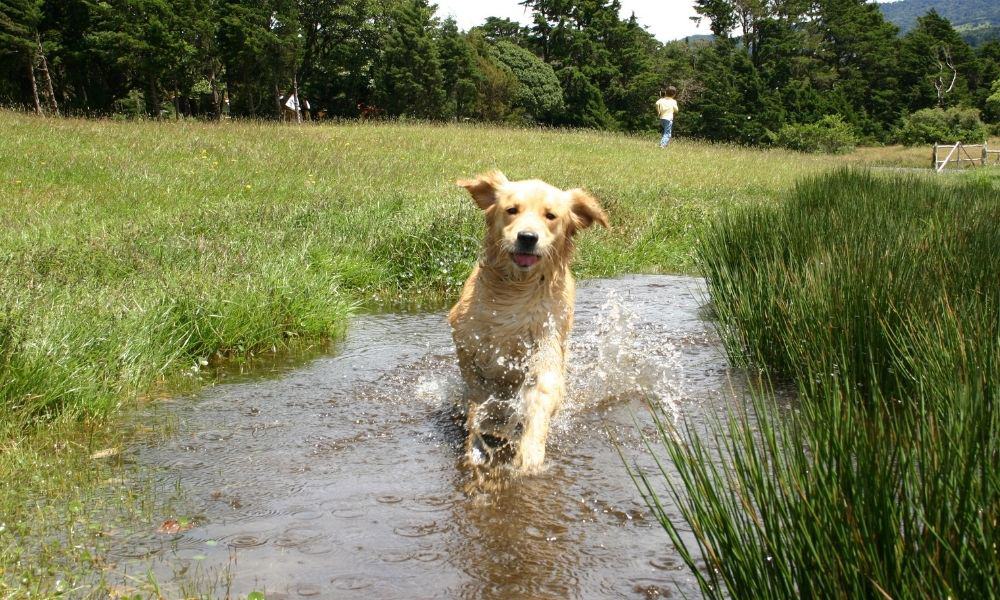Setting up a dog field might sound simple – put up a fence, make a Facebook booking page and watch the money come rolling in.
Having set up and run a successful dog field in north Oxfordshire, and worked with many land owners and tenants to set up their own dog fields, there’s one thing that we would all tell you with hindsight – there was a lot we didn’t know.
Here are the 5 most important things you need to know (and we wish we had), before setting up a dog field:
- You need planning permission
- A dog field is a business
- It is not a passive income stream
- Not all fields are suitable
- You must understand your customer
We had visited masses of dog fields before we decided to set up our own secure field where we live in north Oxfordshire. We saw the good, the bad and the downright ugly. Many years later having visited many more fields and having worked with many people to build their dog walking facilities, we now know that there are some key bits of information that will help you if you’re considering setting up a dog field. We’ll go through them here and by the end, you will be able to decide if a dog field is a business for you.
1) You Need Planning Permission For A Dog Field
In all but a very small number of unique cases, you need to make a full planning application to set up a dog field. It doesn’t matter whether you have an agricultural field, equestrian land, scrub or are converting a car park – planning permission is required.
Planning departments are getting more savvy when it comes to dog field applications, and many are now familiar with what they expect from an application. You should take this process seriously, including detailed plans that cover both the practical elements and the business operations of your enterprise.
We have a comprehensive article on planning permission here which explains more about what is required and why.
It’s important to know that if you don’t make an application there are some serious consequences, not least of all you risk losing your business.

*If you are intending to operate for no more than 28 days in a year, it is possible to set up a temporary dog field under permitted development rights on agricultural land under some circumstances although you should consult with your local planning authorities as things such as access will play a role in approval.
2) A Dog Field Is A Business
There is a common misconception that setting up a dog field is an easy side-hustle for land owners to supplement their income without too much effort.
It is true that many land owners now outsource the set up and running of their dog fields and this is an attractive option for some, making the whole thing very straight forward. Dog fields generate approximately three times the annual income per acre for land owners who choose to let a field for this use rather than for grazing. If you are a land owner who has a parcel of land that you think will make a good dog field, contact us and we can talk you through your options for outsourcing a dog field operation.
For those who want to take the set up and day to day running of a dog field on themselves, the financial rewards are greater than simply outsourcing. However, the effort is also more significant than many anticipate. With a lot of hands-on experience in this arena and data from across the UK, we know that those fields investing the most in terms of time and effort are reaping the highest rewards. Their income can be as much as 75% higher than those who automate their entire business, and these dog fields are infinitely more robust when competitor fields open in the locality.
Taking a dog field business seriously, investing the time and effort is the only way to run a secure dog park.
Hannah, Thanks for all your advice. The initial consultation raised several positive ideas to improve my plan as well as highlighting potential issues both with planning permission and the field area itself. I feel a lot more confident in taking the next steps with my project.
Lesley Henderson, Yorkshire
3) Dog Fields Are Not A Passive Income Stream
Despite what you might imagine, a dog field business is not a hands-free, passive income.
Dog fields must be inspected rigorously every day to ensure there are no breaches in the fencing, security features are working properly (padlocks, gates, CCTV cameras) and the condition of the field is as a customer would expect.
Throughout the year, there will be seasonal specific issues to contend with and hazards to monitor. This might be checking for poisonous vegetation or muddy areas that need isolating; defrosting and lubricating padlocks; removing tree seeds and fruits as well as many more things that are specific to each individual field.
COVID has just brought this requirement for daily inspection into clearer focus as all fields owners should be sanitising touch points, cleaning water bowls and disposing of any general and dog waste.
And this is before a customer has entered the field!
Managing customers can be relatively straight forward. Using a good online booking system and automating communications will reduce your customer interactions but it will not eliminate it completely so someone MUST be available at all times the field is in use. For example, you may have further queries from first time users; emergencies to deal with; booking issues; and customers who have turned up at the wrong time, to name a few.
Many field owners choose to meet customers on their first visits. This may be less intensive over time but it is a commitment and can serve a very important purpose, especially for people unfamiliar with dog field use.
You will also need to invest time in maintaining your field. Whether that is regular mowing, seasonal weed management (which will also require you to close for a period if you are applying chemicals), fence and boundary care – none of these things can be done whilst your field is in use so time must be scheduled in order to keep on top of things.
4) Not All Fields Are Suitable For A Dog Walking Facility
It is less likely that your land itself will be unsuitable as a dog park or field because dogs and their owners enjoy many different types of environments.
It is far more likely that access will be an issue. Whether this is from a highway; along a shared access; along a public right of way; or where no vehicle access currently exists – you must make sure that your customers can get to your field safely, without damaging their vehicle and preferably without having to wash their cars each time they visit!

There are other things that may make your land unsuitable for a dog field or at least will mean that further investigation and research should be conducted prior to making a planning application.
Areas of Outstanding Natural Beauty; Sites of Special Scientific Interest; land currently within a stewardship scheme or an environment protection programme of any kind; land with listed or protected features; and designated wildlife sanctuaries all present planning challenges. There are many more land designations which need some thought when presenting a planning application but these are some of the most common.
Perhaps the most obvious reason your land may be unsuitable is its proximity to residential properties. If you have some concerns about how you go about making a successful planning application in an area that may generate some objections from residents, contact a specialist planning agency for advice.
We work with a specialist agency in this field so if you would like to discuss your concerns, drop us an email and we can arrange a call to chat through your options.
5) You Must Understand Your Customer
This is one thing we knew very well before we started our dog fields because WE WERE OUR CUSTOMER!
This is one area that is becoming increasingly challenging as a regular user of dog fields. The majority of new fields opening around the UK are not owned and managed by people who understand the core customer – owners of reactive dogs. This is something that is very obvious to dog fields users like us.
Whilst an increasing number of owners of non-reactive dogs are using secure fields, your most loyal and regular customers will have dogs that present them with some challenges – whether that is lead reactivity, dogs that get upset by cars, people and other dogs they don’t know, or in our case, have a dog with a strong and undesirable prey drive.

Understanding their challenges and needs will make your business a success. Failing to understand their requirements and expectations will mean that your field has very limited appeal. The community of reactive dog owners is extremely tight and recommendations for fields and other suitable services are only offered where a user has a high level of confidence in that provider.
If you don’t understand this market, take advice from someone who does. Reach out to your local community to find a reactive dog owner or trainer and seek their advice when it comes to your plans. They may identify things you hadn’t even considered. You can also start here for an insight into why dog fields exist.
We speak to a lot of prospective dog field owners and what has always surprised them is how much they discover that they didn’t consider when looking to set up a field. From the expense and hassle of gaining planning permission to setting up a secure website and managing customers on a daily basis – there is work involved.
There is no secret to setting up a successful secure dog field – it’s all about the preparation and consistency of service.
If you are serious about setting up a field and would like some advice about the early stages of setting up you can find more information about our consultancy services here.


One thought on “How To Set Up A Dog Field – 5 Things You Need to Know Before You Begin”
Comments are closed.